Did you know that many of the food products you see on the shelf at the grocery store are patented?
Utility patents are granted by the United States Patent and Trademark Office (USPTO) for useful “inventions” that are new and nonobvious. The owner of a utility patent has the right to exclude others from making, selling, offering to sell, using, or importing the patented invention for a set period of time—usually around 17 years.
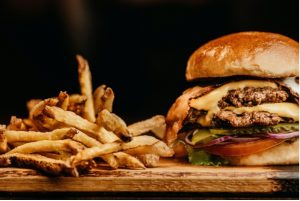
Scrumptious Subject Matter
The USPTO considers four categories of subject matter as “inventions” for utility patents: (1) processes (2) machines (3) manufactures and (4) compositions of matter. Compositions of matter can include a mixture of two or more ingredients, such as ingredients used to form food products.
There are some exceptions. Based on judicial interpretation, abstract ideas, natural phenomena (including products of nature), and laws of nature are not eligible for patent protection. So, a wild strawberry that is found in a bush in the wild can’t be patented as a natural phenomenon. But if you pick that strawberry off the bush, mix it up with some other ingredients, and make something like a low-calorie food bar, can you apply for a patent on that invention? So long as your invention is also novel, useful, and nonobvious – yes!
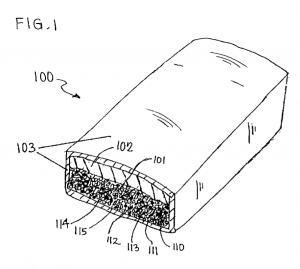
In fact, the USPTO has granted patents for food products in each of the Food and Drug Administration’s food product categories. See below for some examples.
- Beverages
- Cereals and other grain products
- Dairy products and substitutes
- Desserts
- Dessert toppings and fillings
- Fruits and fruit juice
- Mixed dishes
- Nuts and seeds
- Salads
- Sugars and sweets
- Vegetables
Yummy Utility
If utility patents are granted for useful inventions, what is the usefulness claimed by the inventors of food patents? Let’s explore patents directed to improving the functionality, nutrition, and flavor of food products.
Function
The use of many patented food products goes above and beyond providing sustenance. Some patented food products are directed to improving functionality of a food item. For example, U.S. Patent No. 8,703,220 titled “Shaped-potato sandwich product” addresses the mess and waste of placing a pile of french fries on a sandwich. The patented invention describes a “pre-made french fry potato sandwich garnish” designed to eliminate such struggle. Fear not if you appreciate and wish to replicate the ingenuity of this invention – this patent is now expired and can be practiced by anyone without risk of liability.
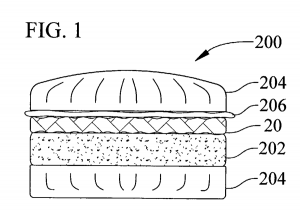
General Mills Inc. holds U.S. Patent No. 10,785,985 entitled “Soft shaped tortillas.” The claimed tortillas are formed into three-dimensional shapes which can serve as edible containers of loose particulate food stuffing (e.g., salad greens, taco fillings, etc.). These novel tortillas are designed to reduce difficulties in folding, holding, and sealing fillings into tortillas.
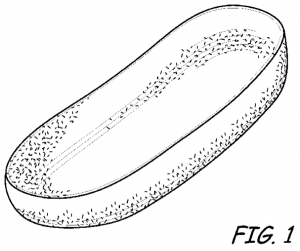
Nutrition
In some cases, the use of a patented food product is an improvement in nutrition. A Chinese health product company owns such a patent for infant and toddler food. U.S. Patent No. 9,414,618 covers infant formula milk powder capable of preventing and alleviating infant iron deficiency anemia.
In other cases, patent holders have sought to patent healthy snacking options. U.S. Patent No. 11,540,553 owned by Mars. Inc. describes “Legume-based food products.” These savory snacks have an outer, crispy shell and an inner, creamy filling. The filled pillows offer a desirable nutritional profile by the use of legumes and additives such as vitamins and minerals.
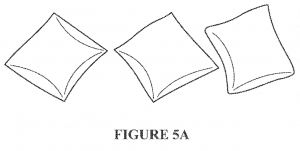
Flavor
Other patented foods are designed to improve taste or flavor of a food product. For instance, Life Savers Inc. holds expired U.S. Patent No. 4,301,178 titled “Liquid-filled chewing gum.” The claimed chewing gum encases a releasable liquid sweetener that promotes immediate flavor release.
In another example, Lotte, a Japanese snack food company, holds expired U.S. Patent No. 5,681,605. The patent describes drawbacks with the taste and feel when pre-filled hollow pretzel rods are baked simultaneously with their filling. To overcome this problem, the inventors came up with a hollow, cylindrical pretzel that allows separate preparation of a pretzel rod and its filling. The patent’s specification even provides evidence that 42% of 121 taste-testers preferred Lotte’s novel pretzel over a commercially available product.
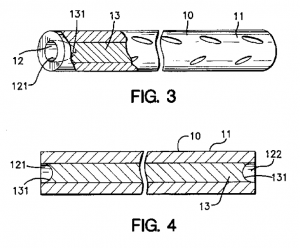
Ingesting Inventions
All of these examples show that patented inventions are everywhere – even in what we eat! So next time you’re chowing down a tasty treat, consider that you might be eating some intellectual property.

Corinne Macnichol
Associate Blogger
Loyola University Chicago School of Law, J.D. 2026
